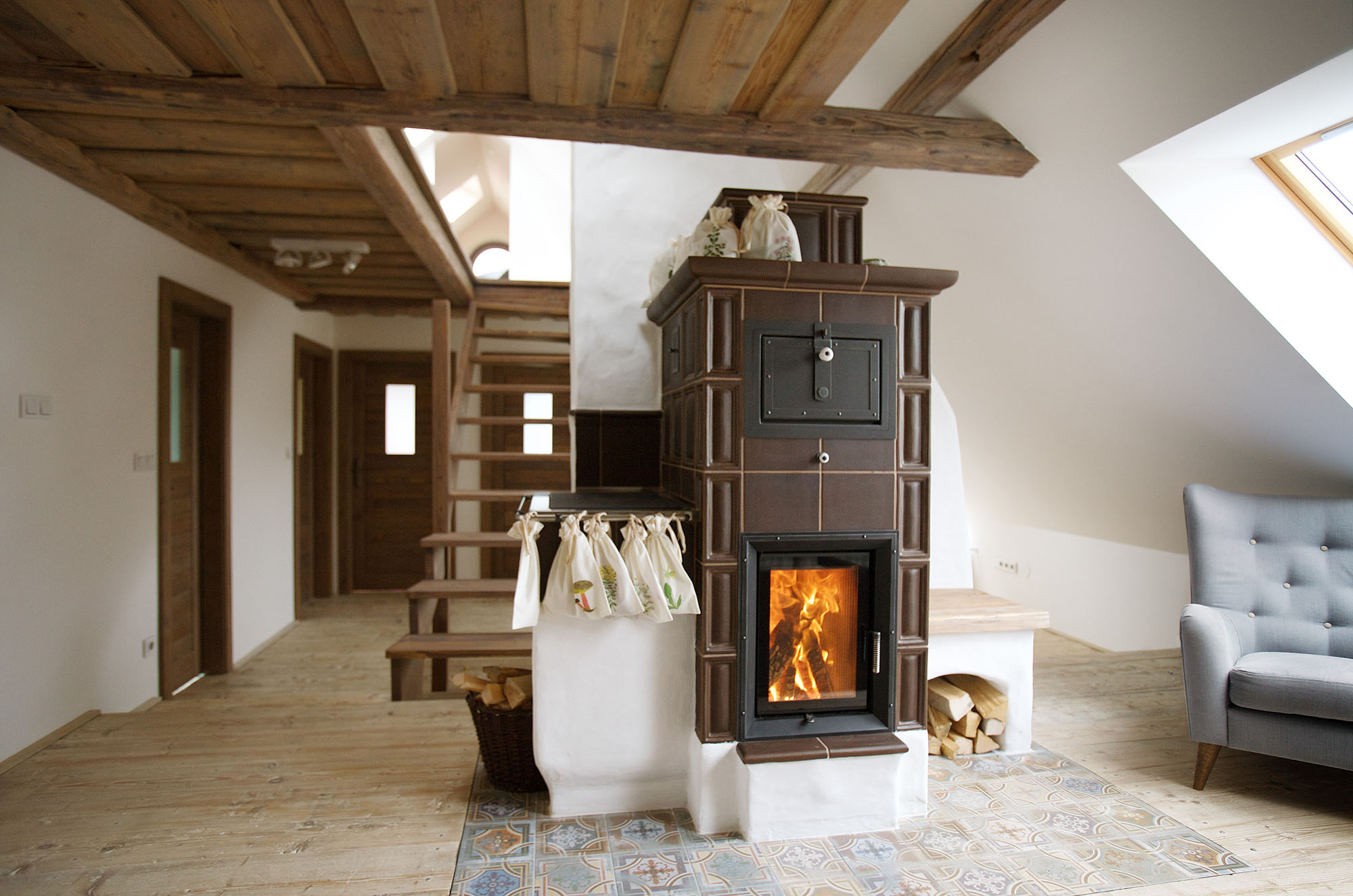
Accumulating radiant stoves
 |
WITH ACCUMULATING STOVES, YOU ONLY NEED TO ADD FUEL ONCE EVERY 12 HOURS
The heat produced by radiant accumulation stoves is very similar to pleasant sunlight. It is a completely healthy, centuries-proven form of heating that provides the user with high operating comfort. The typical fuel loading interval for stoves is 12 hours, and the fuel burns for more than an hour. If the stoves are equipped with glass doors, they offer the user a view of the fire. With two fuel additions every 24 hours, a constant supply of thermal energy to the building is ensured. A significant advantage of accumulation stoves is that, thanks to radiant heat, there is no layering into thermal zones, and the temperature in the room is consistent from floor to ceiling.
TAILORED STOVES FOR YOUR HOME. TRADITIONAL DESIGN AND MODERN AESTHETICS.
Accumulation stoves are generally a bit more space-consuming than regular fireplaces. The advantage is that there is a wide variety of designs and styles available. Accumulation stoves can be a beautiful centerpiece in both a traditional cottage and a modern house.
The stoves are somewhat larger in design because, in addition to the firebox, they hide a mass of accumulation material beneath their casing. It is precisely this material that allows the stoves to continue heating long after the fire has died down. They are often equipped with what's called a warming bench or heated seating, which is another significant bonus for users. Just imagine, on a dreary and chilly day after a walk outside, sitting on a ceramic heated bench and allowing yourself to be warmed by pleasant radiant heat.


Energy Output of Accumulation Stoves
Thanks to modern construction of family homes, most heated buildings today have a heat loss of less than 10kW. Heat loss expresses how much heat a building loses through ventilation and heat transfer through the building structures in one hour. Simply put, the same amount of heat must be supplied to the building every hour to maintain the desired temperature. However, it is necessary to consider that heat loss is calculated for temperature extremes from -18°C to -10°C (depending on the area and altitude). Most often, outdoor temperatures on heating days range around approximately 2°C to 4°C. For this temperature, the heat loss of the building is roughly halved.
When we add the fact that we usually heat only part of the house with the stove, the actual losses that must be compensated for by the stoves are only a few kilowatts per hour.
If the stoves are oversized to compensate for heat loss at an average outdoor temperature of about 2°C to 4°C, it is possible, when the outdoor temperature drops, to increase the intensity of fuel loading and switch from a twelve-hour loading mode to an eight-hour loading mode. This way, we can bridge those days when there is no need to use another source of thermal energy.
Inner Core of Accumulation Stoves
The inner core of accumulation stoves is the firebox with a thermal accumulation flue system. The firebox is specially designed to create high flue gas output temperatures. Such hot flue gases are then allowed to pass through a flue system made of accumulation material. Its length, wall thickness, and shape must be dimensioned for the specific building and chimney. For this sizing, we use both traditional calculation methods and modern software used throughout Europe.
The flue system is designed in such a way that the flue gases, after leaving it, enter the chimney at sufficiently "cool" temperatures. By transferring energy to the flue system in this way, maximum efficiency of the accumulation stoves is achieved.


The Casing of Accumulation Stoves
Accumulation stoves (often referred to as "tiled stoves") can be called radiant structures. This is because the thermal energy is radiated from the core of the stove to its casing, which, due to its thermally conductive properties, heats up to pleasant surface temperatures of 40°C to 60°C. This heating of the casing allows the energy to be gradually transferred to the space around the stove through radiation (infrared radiation).
Control of Accumulation Stoves
With accumulation stoves, it is extremely important to close the combustion air supply after the fire has gone out. This can be done manually or automatically by an electronic combustion control system.











